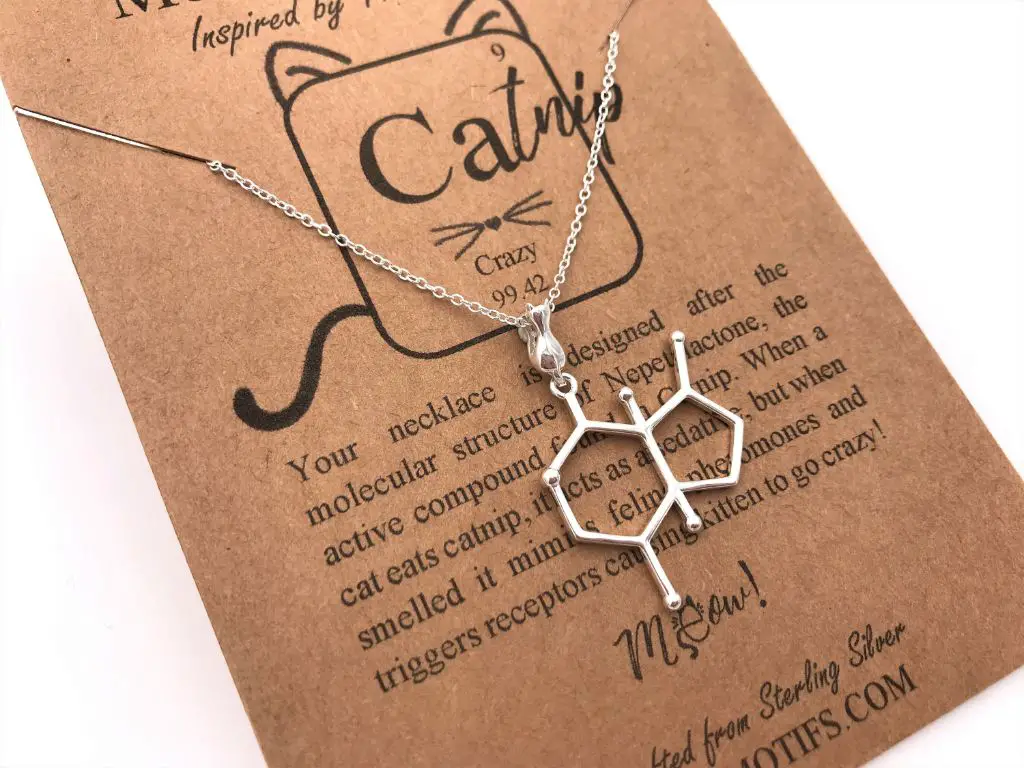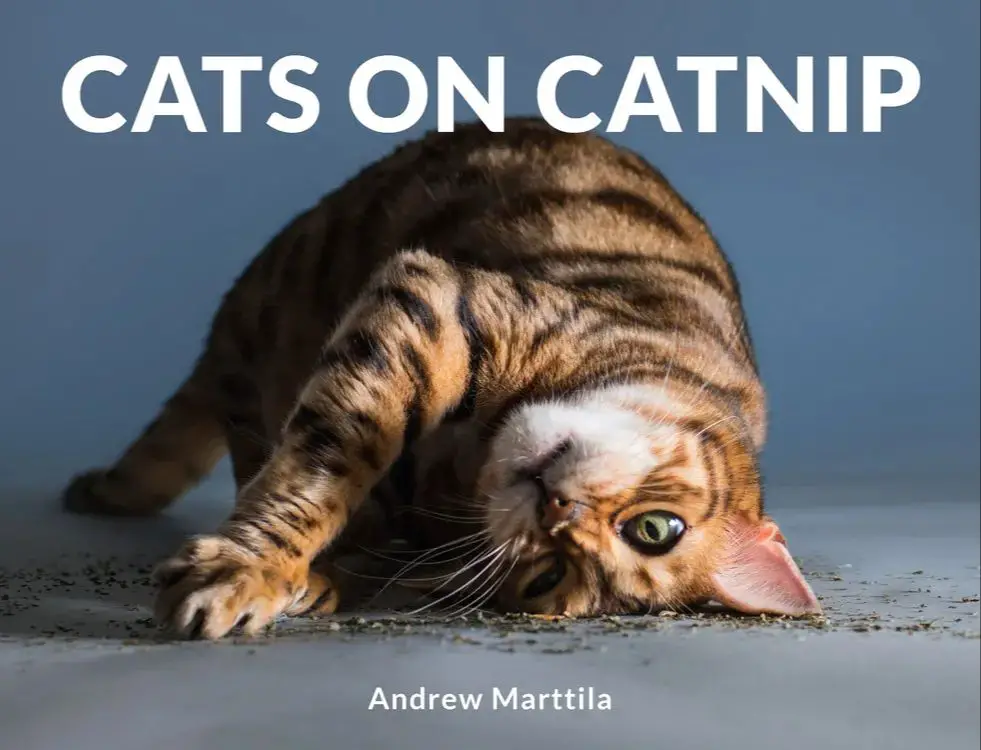What is Catnip?
Catnip (botanical name: Nepeta cataria) is an herb that belongs to the mint family Lamiaceae. It is a perennial flowering plant native to Europe and parts of Asia. However, it can now be found growing in other parts of the world like North America. Catnip has been used for centuries as a medicinal herb and to enrich the lives of domestic cats.
The active chemical compound that causes a euphoric effect in cats is called nepetalactone. This compound is found in the leaves and stems of the catnip plant. When cats smell or consume catnip, the nepetalactone binds to receptors in their nose and mouth, triggering a response that researchers believe mimics the effects of cat pheromones. This causes most cats to act playful, affectionate, excited or even sedated.
Active Ingredients in Catnip
The main active ingredient in catnip that produces effects in cats is a compound called nepetalactone. Nepetalactone is an organic compound that belongs to the class of chemicals called monoterpenes (source). It is concentrated in the leaves, stems and flowers of catnip plants (Nepeta cataria).

Nepetalactone acts as a feline attractant and triggers a behavioural response in cats after inhaling the volatile oil. It binds to olfactory receptors in the cat’s nasal tissue, which stimulates neurons in the olfactory bulb region of their brain. This causes the typical excited behavioural effects observed when cats are exposed to catnip (source).
The specific chemical structure of nepetalactone contains two fused rings with several double bonds. It has a bicyclic backbone and contains both alkene and ketone functional groups. The chemical formula for nepetalactone is C10H14O2 (source).
In addition to nepetalactone, catnip contains other volatile compounds like citronellol, nerol, citral, and geraniol, but these are not known to produce effects in cats.
Effects of Catnip on Cats
The active ingredient in catnip that causes a response in cats is called nepetalactone. This is an organic compound that binds to receptive olfactory (smell) receptors in a cat’s nose. When inhaled, nepetalactone triggers a response that affects a cat’s behavior and nervous system.
Typically, when exposed to catnip, cats will sniff, lick, eat, roll, rub, and play with the plant. Common behavioral effects include drooling, chin and cheek rubbing, head shaking, rolling around, excited jumping or pouncing, and aggressive play.
These responses to catnip are believed to be pleasurable for cats and some may perceive it as a “high.” However, the effects are temporary, subsiding after 5-15 minutes before the cat returns to normal. Not all cats respond to catnip, with estimates ranging from 50-80% exhibiting sensitivity.
While the precise mechanism is unknown, studies suggest catnip activates opioid receptors involved with rewarding and pleasurable sensations (Source). Nepetalactone is structurally similar to valepotriates found in valerian root, known for its sedative properties in cats.
Is Catnip Addictive for Cats?
There is no evidence that catnip is addictive for cats in the traditional sense. Catnip does not cause cats to experience physical dependence, withdrawal symptoms, or cravings like addictive drugs do in humans and animals (CooperandGracie, 2023).
While some cats may react strongly to catnip and seek it out repeatedly, this is likely due to the euphoric sensations and playful energy catnip can induce in cats. The effects of catnip typically wear off within 5-15 minutes, after which cats lose interest (Sepicat, 2023).
Furthermore, research shows that catnip exposure needs to be limited to maintain its effects on cats. Cats become temporarily immune to catnip’s effects after being exposed to it for around 2 hours. They need to have a period without catnip for the effects to return (Greg, 2023).
So while catnip can generate intense responses in some cats, it does not lead to the uncontrolled, compulsive use required to be considered truly addictive.
Catnip Safety Concerns

Overall, catnip is considered safe for cats. According to the ASPCA, there is no evidence that catnip is toxic or harmful to cats when used appropriately [1]. The active ingredient in catnip, called nepetalactone, is not known to cause any adverse health effects.
However, there are some potential side effects to be aware of. Consuming too much catnip can occasionally cause upset stomachs or diarrhea in some cats. The ASPCA recommends limiting your cat’s catnip consumption to avoid gastrointestinal upset [1]. Cats may also experience lethargy or hyperactivity after catnip wears off.
Overall, catnip is not considered addictive or toxic for cats when given in moderation. Monitor your cat’s individual reaction and adjust the amount given accordingly. Most cats can enjoy catnip safely with no adverse effects.
Using Catnip Safely
When used properly, catnip is generally considered safe for cats. However, there are some precautions owners should take to ensure their cat’s safety when using catnip.
Proper dosage and application of catnip is important. Giving too much catnip or using it too frequently can cause overstimulation and anxiety in cats. Most experts recommend limiting catnip usage to no more than 1-2 times per week. When giving dried catnip, only provide around 1/4 to 1/2 teaspoon at a time. For catnip toys and sprays, follow package instructions and monitor your cat’s reaction.

Kittens under 6 months old should not be given catnip, as their young brains are still developing. Catnip use can wait until a kitten is older. Pregnant or nursing cats should also avoid catnip.
When first introducing catnip, give a small amount and watch your cat’s reaction. Stop providing it if they show signs of distress or anxiety. Every cat responds uniquely to catnip based on genetics, age, and temperament.
Most importantly, never force a cat to interact with catnip if they seem disinterested, afraid, or anxious. While many cats love catnip, some may not respond at all. Respect your cat’s preferences and comfort level when using catnip products.
With proper precautions, catnip can be a fun, safe way to provide enrichment to cats. But be sure to monitor your cat’s reaction and adjust usage accordingly.
Sources:
https://urgentvet.com/catnip-safety/
https://www.petcarerx.com/article/is-catnip-safe-5-things-you-should-know/81
Other Uses of Catnip
Catnip has numerous uses for humans beyond just entertaining cats. The medicinal applications of catnip date back at least two thousand years. Catnip tea has long been used to calm restless insomnia, reduce anxiety, and ease stomach discomfort.[1] Catnip is also ingested by humans as a stimulant, anesthetic, carminative, diaphoretic, and emmenagogue.[2] Further research is needed to fully validate these claimed health benefits of catnip tea and supplements.
Catnip essential oil contains nepetalactone which acts as a natural insect repellant. Oil extracted from catnip leaves has been shown to effectively repel stable flies, mosquitoes, cockroaches and termites.[3] Catnip oil can be applied to the skin or diffused in the air to drive away flying and crawling bugs. Dried catnip sprinkled around the home can also help deter some insects.
In addition to its insect repelling properties, catnip plants are attractive to pollinators and beneficial predatory insects like lady beetles and green lacewings. Catnip’s flowers provide nectar that feeds butterflies, honey bees, and hummingbirds.
[1] https://www.drugs.com/npc/catnip.html
[2] https://commonsensehome.com/catnip/
[3] https://www.gardeningknowhow.com/edible/herbs/catnip/uses-for-catnip-plants.htm
Growing Catnip
Catnip is relatively easy to grow both indoors and outdoors. Catnip grows best in full sun and well-drained soil with a pH between 6.0-7.0. It is recommended to plant catnip from seed indoors 6-8 weeks before the last spring frost date in your area (source). Plant the seeds 1⁄4 inch deep in seed starting mix and keep the soil moist. Transplant the seedlings when they are 2-4 inches tall.

When planting catnip outdoors, choose a spot that gets at least 6 hours of sunlight per day. Space the plants 18-24 inches apart in an area with good air circulation. Barely cover the seed and tamp down gently. The soil should be kept moist but not soaked (source). Catnip grows as a perennial in zones 3-9 when planted outdoors.
Catnip can also be grown in containers at least 6 inches deep. Use a quality potting mix and make sure the containers have drainage holes. Keep the soil consistently moist but not soggy. Fertilize the plants monthly with a balanced liquid fertilizer.
Catnip is ready for harvest once the plant has flowered. Cut the stems just above ground level and hang upside down to dry. Once dried, the leaves can be removed from the stems and stored in an airtight container. When harvesting, always leave at least 1/3 of the plant intact for regrowth.
Purchasing Catnip Products
When purchasing catnip products, it’s important to buy from reputable sources to ensure quality and safety. Look for organic, pesticide-free catnip grown in North America or Europe. Many natural pet stores carry high-quality catnip products. You can also find catnip online, but be wary of cheap products from unknown sellers.
Catnip is available in several forms including loose dried leaves, teas, sprays, toys, and treats. Loose dried catnip can be sprinkled on scratching posts or cat beds. Catnip sprays are easy to apply to toys. Catnip teas can be made by steeping the leaves or offered in premixed bags. Catnip toys are stuffed with pure catnip or sprayed with catnip oil. Catnip treats contain dried catnip along with other natural ingredients.
When evaluating catnip products, look for ones made with whole catnip leaves rather than lower quality leaf dust or stem powder. The freshest catnip will be bright green in color. Brown, dull catnip may have lost its potency. Organic and fair trade certified catnip demonstrates responsible and sustainable sourcing. High-quality brands package catnip in sealed bags or airtight containers to preserve freshness. With quality catnip from a trusted source, you can enjoy observing your cat’s entertaining “catnip high” safely.
FAQs
Here are answers to some frequently asked questions about catnip:
Is catnip safe for cats?
Yes, catnip is generally considered safe for cats when used appropriately. The active ingredient, nepetalactone, is non-toxic and harmless. However, cats can become overly excited or aggressive with catnip, so supervision is recommended. Do not let cats consume very large amounts.
Is catnip addictive?
No, catnip is not addictive or habit-forming for cats. The euphoric response to catnip is temporary and fleeting. Cats cannot become chemically dependent or hooked on catnip.
How much catnip should I give my cat?
Moderation is key. Give cats a small pinch or a few leaves at a time. Provide access to catnip for 5-10 minutes per session, then remove it. Too much catnip can cause overstimulation or lethargy when the effects wear off.
Should kittens or older cats have catnip?
Kittens younger than 3-6 months old typically do not respond to catnip. Older cats may lose interest as well. Check for a response before giving significant amounts of catnip to kittens or senior cats.
Is it safe for humans?
Yes, catnip is safe for human consumption in food and tea. It has a minty, herbal flavor. However, humans do not experience the same euphoric effects as cats.
For more catnip FAQs, see: https://www.kittyweed.com/catnip-faqs.html

